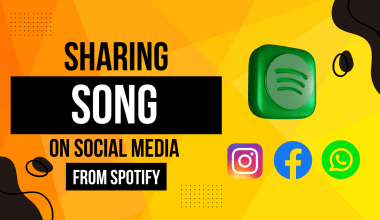In today’s music industry, success often depends on your ability to understand and analyze your streaming data. For artists, managers, and producers, a Spotify stream tracker is more than a tool—it’s a necessity. Tracking your Spotify streams can provide crucial insights into your audience, helping you grow and refine your music career.
With music streaming dominating the industry, understanding the performance of your songs on platforms like Spotify is vital. This guide dives deep into what Spotify stream tracking is, how it works, and the best tools available to keep you ahead.
What is a Spotify Stream Tracker?
A Spotify stream tracker is a digital tool that allows you to monitor the performance of your songs on Spotify. By using a stream tracker, you can get real-time updates on the number of plays your music receives, which regions your streams come from, and even the demographics of your listeners.
Spotify stream trackers are crucial for independent artists, record labels, and anyone involved in the music business. These tools not only provide stream counts but also deliver valuable analytics that help you tailor your marketing strategies.
Why Use a Spotify Stream Tracker?
Understanding your audience is the key to success in the music industry. A Spotify stream tracker gives you the ability to:
- Monitor Growth: Keep an eye on your daily, weekly, and monthly streams to assess the success of your music.
- Audience Insights: Learn about your listeners’ preferences, including location, age, and gender.
- Track Campaign Success: Evaluate how your promotional efforts impact your streams.
- Optimize Strategies: Use data to decide where to tour or which playlists to pitch your music to.
With the rise of independent artists, having access to such insights is more important than ever.
Top Features of a Spotify Stream Tracker
The best Spotify stream trackers offer features that go beyond basic analytics. Here are some key functionalities to look for:
- Real-Time Updates: Immediate information about your stream counts.
- Listener Demographics: Insights into who is listening to your music.
- Geographic Data: See where your streams are coming from.
- Playlist Impact Analysis: Understand which playlists are driving your streams.
- Historical Data: Compare your performance over time.
Having access to these features can significantly impact your music marketing strategies.
Tools for Tracking Spotify Streams
Many tools are available to help you monitor your streams effectively. Below are some popular Spotify stream tracker tools:
- Spotify for Artists: Spotify’s official platform allows artists to track their streams, playlist additions, and audience insights.
- Chartmetric: A powerful tool for tracking Spotify streams and gaining insights into playlist placements.
- Soundcharts: Offers real-time analytics for streams and social media engagement.
- Music Gateway: A comprehensive platform for managing your music career, including stream tracking.
Each of these tools has its strengths, and choosing the right one depends on your needs and budget.
How Spotify Stream Trackers Work
Spotify stream trackers use Spotify’s API to fetch real-time data about your streams. These tools integrate with your Spotify account to pull information such as:
- Number of streams for each song.
- Playlist features and their impact.
- Listener details, including location and device.
This data is then presented in an easy-to-understand format, often with charts and graphs.
Benefits of Using a Spotify Stream Tracker
For any artist or music professional, the benefits of using a Spotify stream tracker are numerous:
- Improved Marketing: With detailed insights, you can create targeted marketing campaigns.
- Audience Connection: Understanding your audience helps you engage with them more effectively.
- Playlist Success: Knowing which playlists boost your streams can guide your pitching efforts.
- Career Growth: Data-driven decisions can accelerate your music career.
By investing in a good stream tracker, you’re investing in your future success.
Growing Your Audience with Spotify Stream Insights
Once you have access to detailed data from a Spotify stream tracker, you can take actionable steps to grow your audience:
- Leverage Social Media: Share insights with your fans to build engagement.
- Collaborate Strategically: Partner with artists in regions where your streams are growing.
- Tour Smart: Use geographic data to plan tours where you already have a fan base.
- Playlist Pitches: Focus on playlists that align with your audience demographics.
These strategies can help you build a loyal and engaged listener base.
The Role of Playlists in Stream Growth
Playlists are a significant driver of streams on Spotify. Many stream tracker tools allow you to monitor your playlist placements and assess their impact on your streams. Focus on pitching to curators who manage playlists that align with your genre and audience.
Conclusion: Take Control of Your Music Career
A Spotify stream tracker is not just a tool; it’s an essential part of your music career. By leveraging the data these trackers provide, you can make smarter decisions, reach a broader audience, and achieve your goals faster.
Whether you’re a new artist or an industry veteran, understanding your Spotify stream data is key to staying competitive. Invest in a good stream tracker and watch your music career soar.
For further reading, explore these related articles:
For additional resources on music marketing and distribution, visit DMT Records Private Limited.






